Posts Tagged: CDFA
Find the Green Darner
Find the green darner. Trying to spot the green darner dragonfly, Anax junius--so named because of its resemblance to a darning needle--is like...
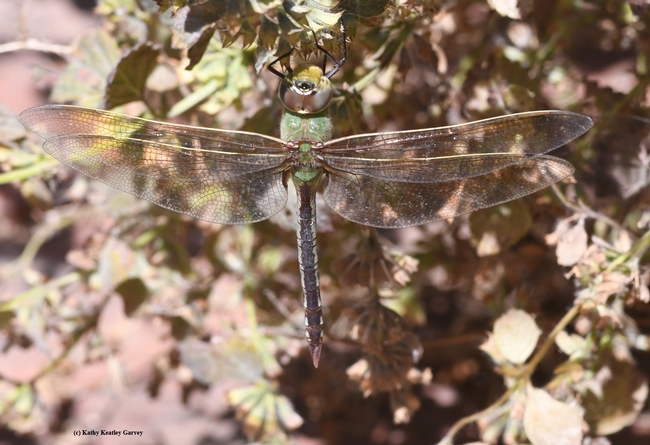
Green darner dragonfly, Anax junius, in Benicia State Historical Park. (Photo by Kathy Keatley Garvey)
The Lady Beetle and the Syrphid Fly
So, here I am, an Asian lady beetle (Harmonia axyridis) perched on a rose bush in Vacaville, Calif., as dawn breaks. I'm eating aphids and...
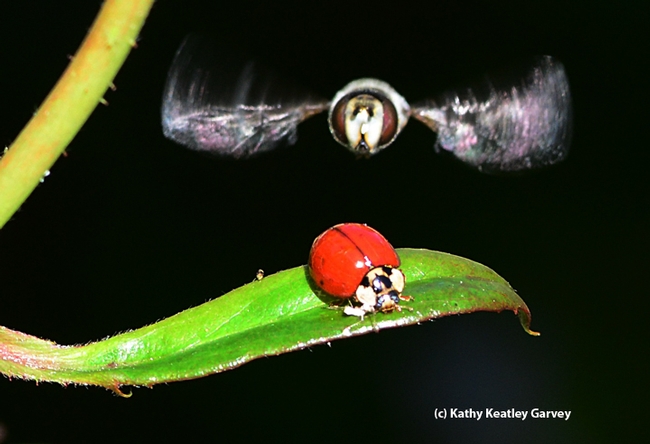
A large syrphid fly, Scaeva pyrastri (as identified by Martin Hauser of the California Department of Food and Agriculture), heads for a lady beetle. (Photo by Kathy Keatley Garvey)
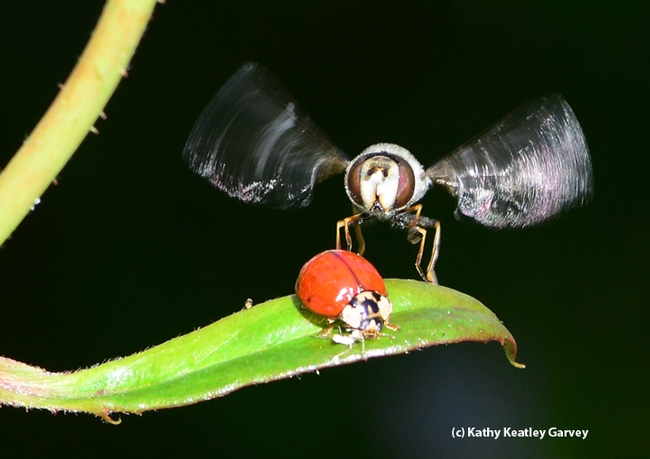
Touchdown! The large syrphid fly, Scaeva pyrastri, lands next to the lady beetle.(Photo by Kathy Keatley Garvey)
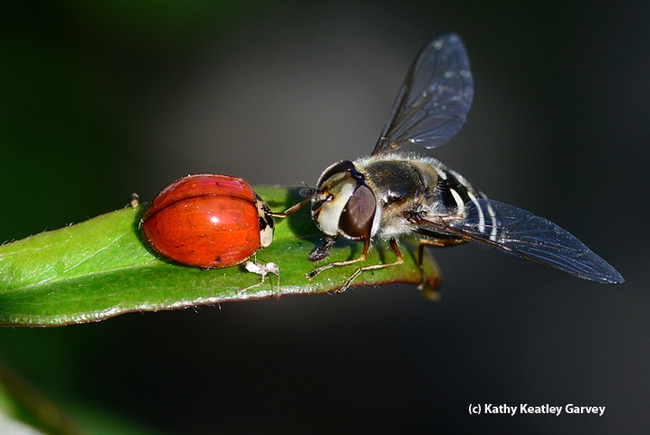
The syrphid fly licks honeydew from the lady beetle. (Photo by Kathy Keatley Garvey)
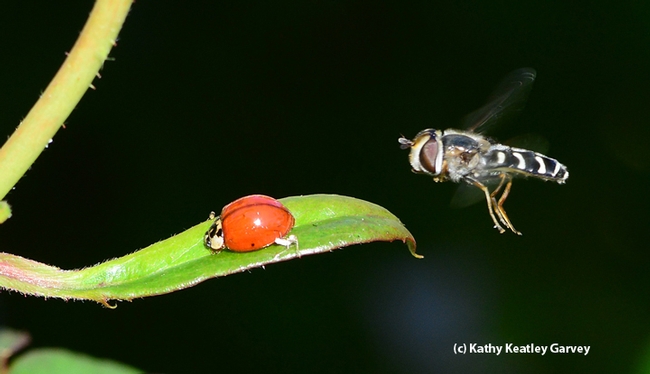
Honeydew is a sugar-rich sticky liquid, secreted by aphids and some scale insects as they feed on plant sap. When their mouthpart penetrates the phloem, the sugary, high-pressure liquid is forced out of the anus of the aphid.
Feuding, Bigamy and Tunneling: Hear About The Eccentric Life of Entomologist Harrison Dyar
Former Smithsonian entomologist Harrison G. Dyar, noted for his research on moths and butterflies, was not your typical entomologist. He feuded with...

Entomologist Marc E. Epstein researched, wrote and published "Moths, Myths and Mosquitoes: The Eccentric Life of Harrison G. Dyar, Jr."
Blue as Blue Can Be
They look like shiny blue and black needles. Make that "flying" shiny blue and black needles. We spotted this damselfly foraging on a Mexican...
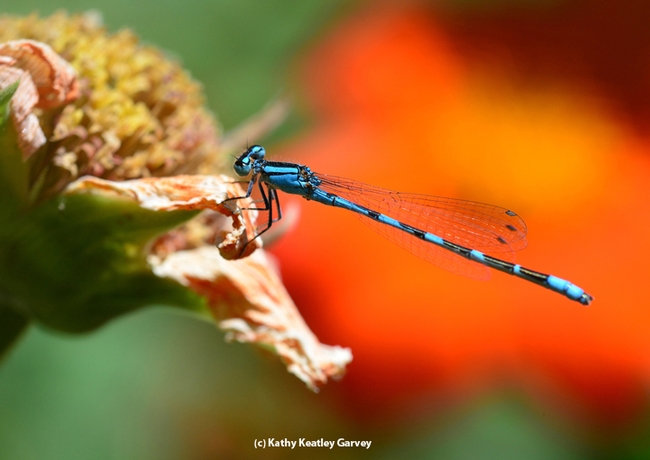
A male tule bluet on a fading Mexican sunflower blossom. (Photo by Kathy Keatley Garvey)
Collaboration will help feed a hungry world
CDFA secretary Karen Ross and public relations executive Kerry Tucker suggested in an op-ed published yesterday in AgAlert that the best way to meet future international opportunities and challenges in agriculture is with a collaborative and harmonious industry.
The article included information about anticipated global demographic changes from the UC Agricultural Issues Center. According to the AIC, China will more than triple its per capita income by 2030, from $2,802 to $10,718. This kind of wealth tends to result in first-step dietary adjustments that include more consumption of meat, dairy products, fruits, vegetables and nuts.
India's numbers start smaller, from $965 per capita last year to $3,309 in 2030, but its population will continue to grow by 1 percent per year long after China's population peaks in about 2030, according to Daniel Sumner, director of the AIC. As a result, India's population will stay young and energetic for years to come, with a growth rate that could soon overtake China.
Because California farmers and ranchers are located in one of only five regions on earth capable of large-scale production of Mediterranean specialty crops, they are well positioned to prosper in the changing international marketplace.
However, say Ross and Tucker, tension between proponents of large- and small-scale production can get in the way of the cooperation required to meet the food demands of the future.
"Regardless of size or farming practices, we need a continuum of farms and ranches operating as productively as possible while protecting our precious natural resources and the environment. There is truly a place for all in California agriculture," they said.

Dan Sumner said India's population will continue to grow long after China's population peaks.

